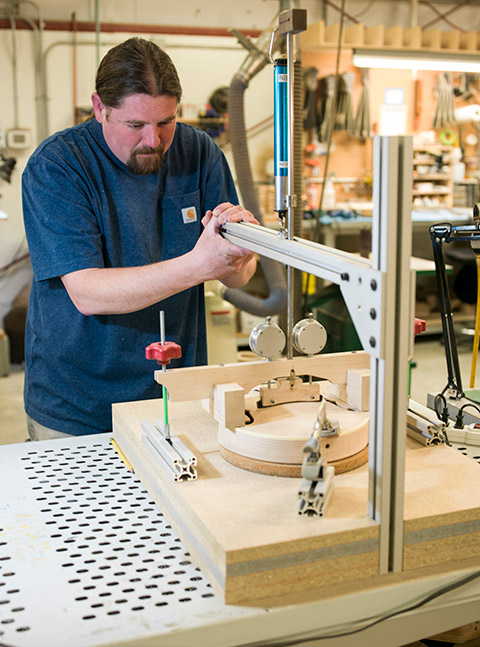The New Weber: Deflection Testing
Mar 14, 2018, Weber News


The Weber team is focused on crafting the best playing and sounding traditional mandolins. As part of this process, they have developed and implemented a new deflection testing program at the custom shop in Bend, Oregon. It’s just one of the new advancements contributing to the best sounding and playing Weber mandolins we've ever built.
DEFLECTION TESTING
Stiffness of wood is very important in determining the sound quality and long-term stability of an instrument. Wood from the same species or even the same tree may have different properties. Deflection testing is a mechanical tuning process to measure the stiffness properties of every instrument top. The soundboard can be tuned by adjusting the stiffness of the wood. Deflection tuning gives us the optimal relationship between the strings load and the top’s resistance to the load.
OUR PROCESS
We test and record every instrument at two stages. The first measurement is taken when the top has been glued to the rim structure. The second measurement is taken before the final 400 grit of sanding, the final step before the instrument is sent to finish.
The instrument is aligned in the deflection jig with the bridge feet positioned at the location of final bridge placement. The two bridge feet are attached to dial indicators to measure deflection independently on the bass and treble side. A scale is attached to the lever which applies 25lbs of pressure on the bridge feet to simulate string tension on the top. Dial indicators measure the thousandths of an inch a top deflects under the simulated string load. The top is carefully sanded to achieve tight tolerances. Executing precise measurements on the bass and treble sides to within a few thousandths of an inch can make a significant difference in achieving the proper stiffness of the top. This gives us consistent, repeatable results in the tone quality of every instrument.
THE RESEARCH
Weber top and back graduations are uniquely designed to create a specific sound. To identify the target goal for Weber instruments, we recorded a significant amount of data to determine the ideal measurements for the best tone. Our research indicates this process yields very consistent results.
